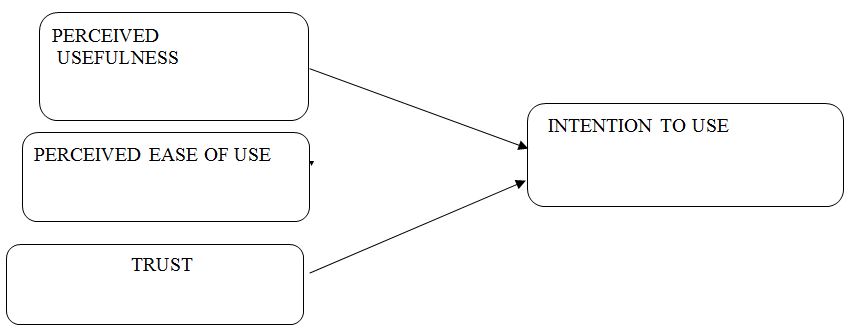The company selected for the analysis is UPS, experiencing a rise in online sales and should monitor and manage the sudden upsurge. Based on the case study, in 2013, UPS miscalculated Christmas demand and failed to deliver items on time due to poor weather. Since then, the carrier has focused on ensuring sufficient resources are available to address the end-of-year spike. UPS claimed in June 2017 that it would impose a surcharge on specific high-season pricing. The 2017 peak season rate would apply to particular services and oversize shipments. According to UPS, the increased price is required to offset the expenses of additional resources needed to accomplish planned capacity increases.
Although surcharges are used, the price structure aims to discourage the shipment of large, odd-sized, or excessive loads since such packages would not pass through the company’s sorting system. Growing consumer demand for Christmas shipments combined with the pandemic’s impact on transportation supplies produced the perfect storm. UPS delivered 96.1 percent of its shipments on schedule for the week of December 6. Nonetheless, the number of goods lost or delayed appeared to be high. Thus, the current business situation requires assessment and analysis to develop a strategic plan and manage existing obstacles.
Mission and Vision
The UPS mission statement is clear and straightforward because it explains the company’s core principles and how they generate success and motivate workers, vendors, the general public, investors, and stakeholders. According to the UPS mission statement, the corporation seeks to expand its worldwide business by servicing customers’ logistical needs while providing value and excellence in what they do (Hughes, 2020). UPS purports to be a financially solid firm with widespread employee ownership that offers shareholders long-term competitive returns. The organization motivates employees and business partners by providing chances for personal growth and achievement (Hughes, 2020). Furthermore, UPS pledges to be a responsible, compassionate, and sustainable corporation that contributes to positive change in the communities it serves.
UPS’s vision statement emphasizes the value of customers to the company. According to the UPS official website, the vision statement is “Our customers’ growth is our growth” (Our strategy, n.d., para 2). UPS strives to assist companies of all sizes and locations in achieving their objectives in a continuously changing world (Our strategy, n.d.). Hence, as a global logistics leader, UPS recognizes and values the responsibility of assisting in the development of safer, better, and more resilient communities based on equality and economic opportunity for everyone.
SWOT
Based on the case study, it is vital to conduct a SWOT analysis of UPS to evaluate the business situation (See Figure 1). Firms use SWOT analysis to understand their internal strengths and weaknesses and what external forces may provide opportunities for success or threats (OpenStax, 2021).

First, UPS’s corporate image as a top shipper and customer loyalty are strengths. The weaknesses are the inability to deliver packages on time during busy seasons owing to insufficient resources and the difficulty of the company’s sorting system to handle large, odd-sized, or enormous shipments. The opportunities are increased e-commerce and peak season price positioning required to accomplish forecasted capacity increases. The threats include the pandemic’s impact on transportation supplies and bad weather conditions.
The Five-Step Planning
Planning is a future-oriented, extensive, systematic, coordinated, and collaborative process. The five steps are as follows: generating an awareness of the current condition, establishing outcome statements, premising, deciding on a course of action, and developing supportive strategies (OpenStax, 2021). First, the SWOT analysis assists in positioning UPS’s current situation. Second, the outcome statement means establishing goals; UPS’s goal is to monitor and reduce weaknesses, such as shortcomings of the company’s sorting system and manage threats, such as transportation supply difficulties. The next step, premising, requires building assumptions about future events. For instance, the pandemic’s consequences may worsen the current business situation by increasing demand for holiday shipments and the rising number of massive packages. The fourth step is identifying a future course of action; UPS should focus on operational goals that represent the precise intentions of management. The organization may invest in improving and updating the sorting system. Finally, the supportive strategy should consider hiring additional employees and purchasing trucks because of supply problems.
Conclusion
The recommendation for the most challenging goal, namely meeting the customer’s expectations and satisfying the increased demand after the pandemic, is to increase the budget for the R&D department and focus on improving UPS’s sorting system. The corporation should prioritize the development of administrative strategies and the distribution of organizational resources to internal divisions. The entire workforce should understand that the customer’s happiness is the foundation of success. It is vital to conduct additional training and educate on the new sorting system. The risk management department should also analyze the current situation and make predictions based on the system’s data. The number of lost and delayed packages should be monitored, and preventive measures are needed to avoid such unfavorable situations. Strategic management must develop and apply techniques that fit an organization’s mission and vision as closely as feasible to its environment.
References
OpenStax. (2021). Principles of Management. Rice University.
Hughes, J. (2020). UPS mission statement explained. Business Chronicler. Web.
Our strategy. (n.d.). UPS. Web.